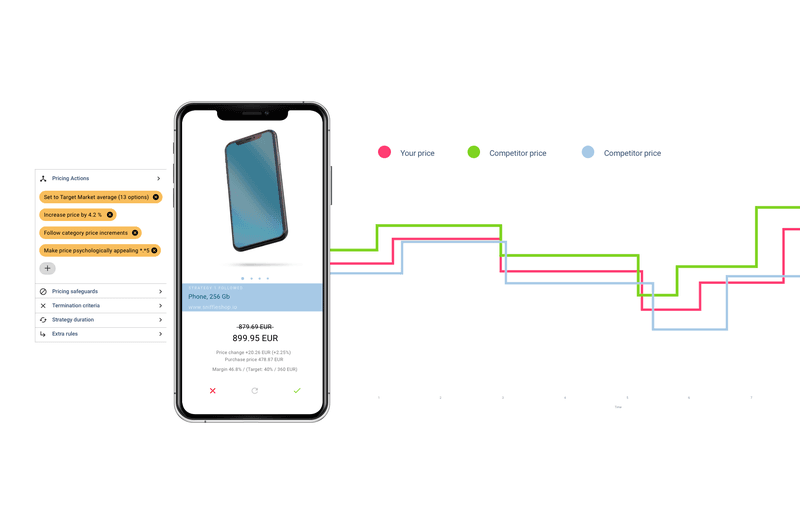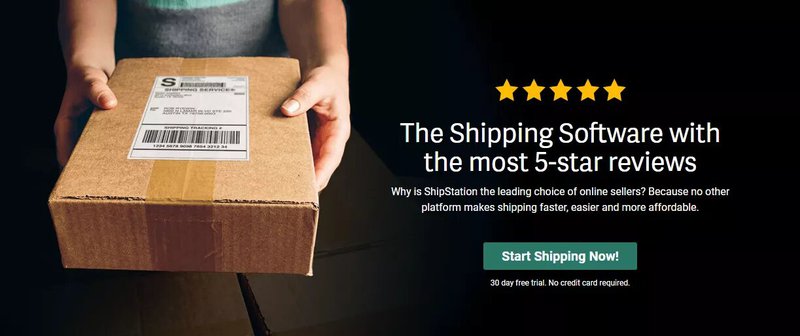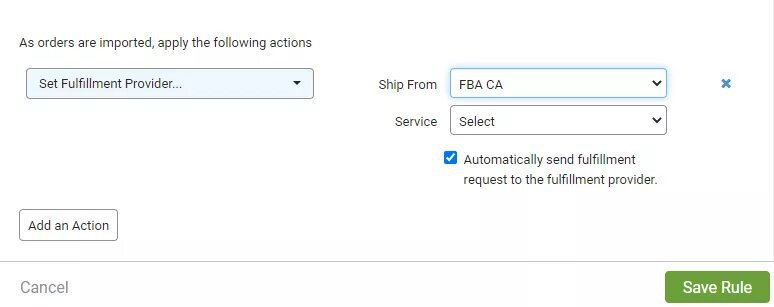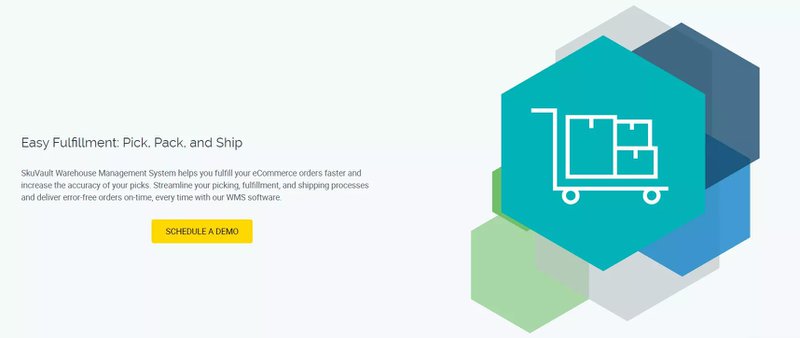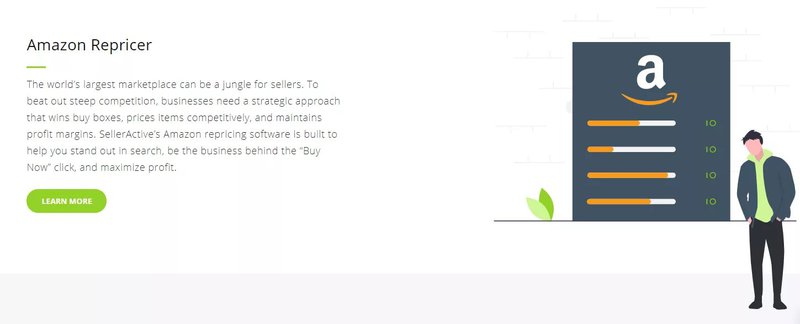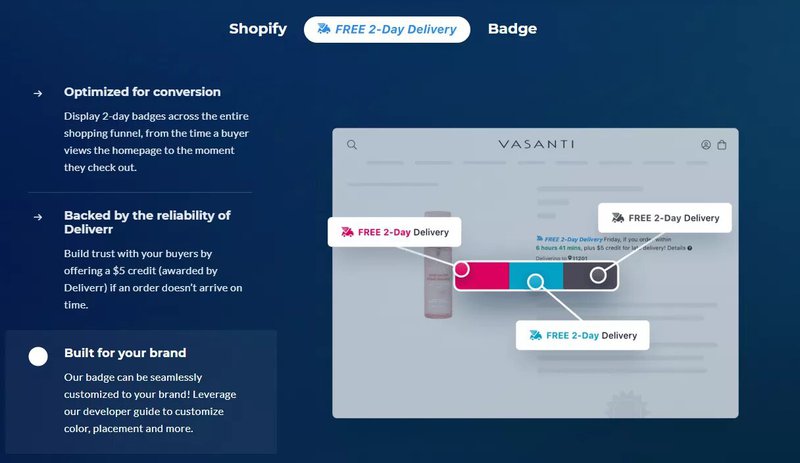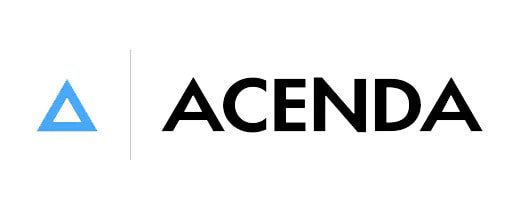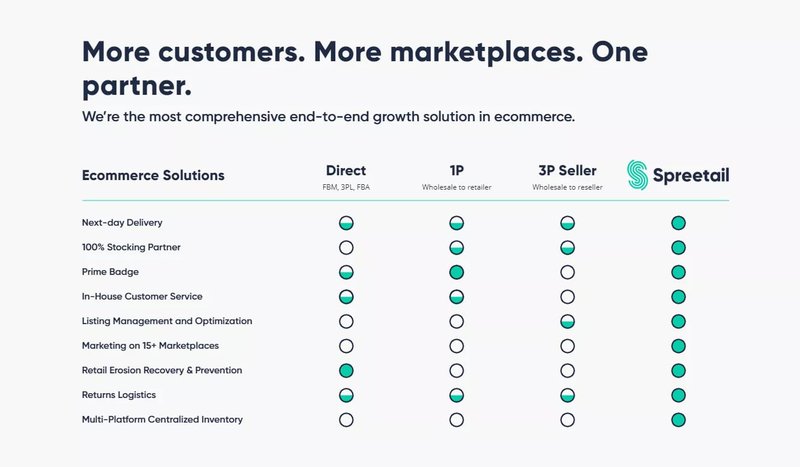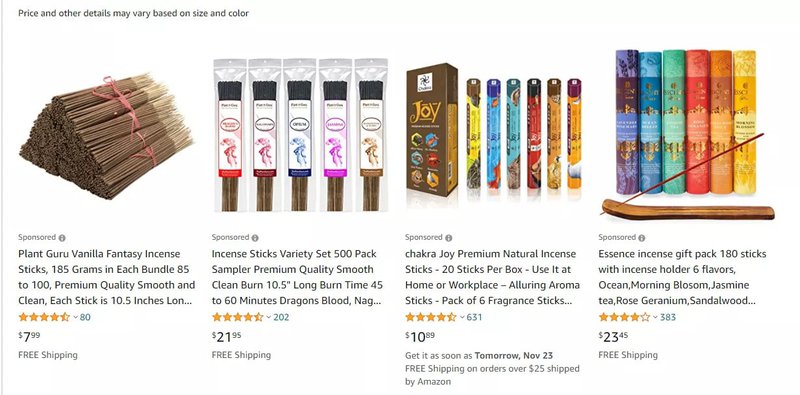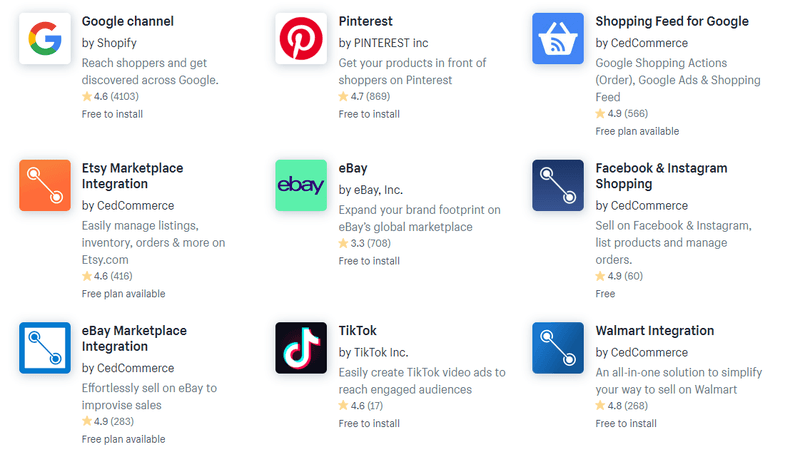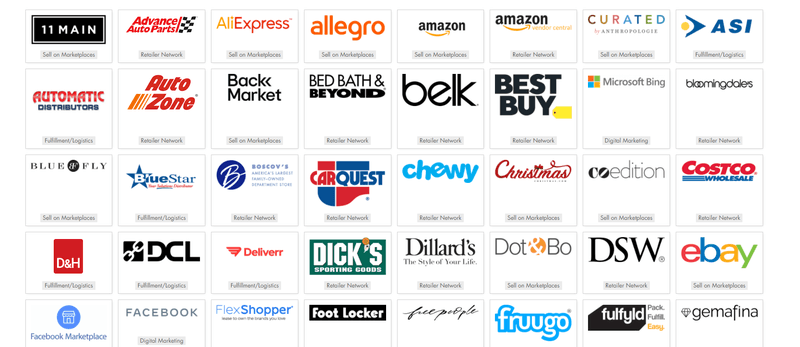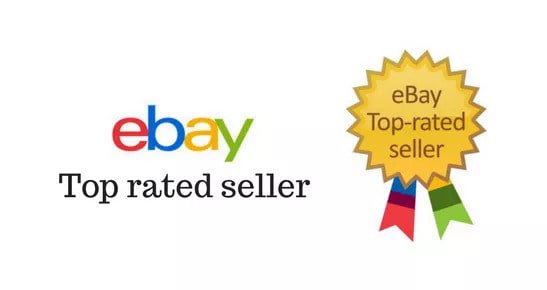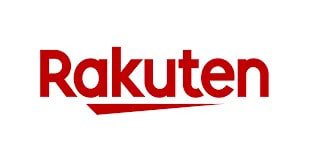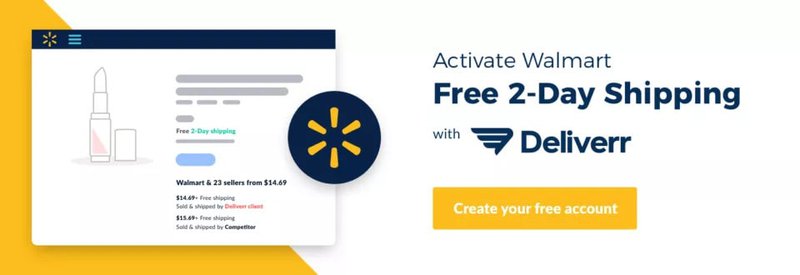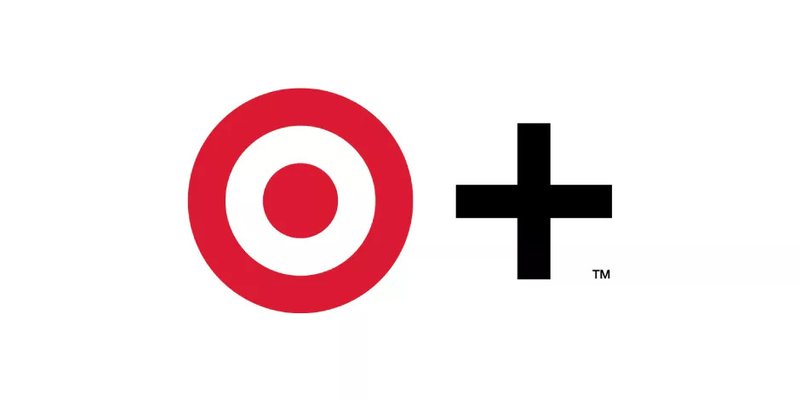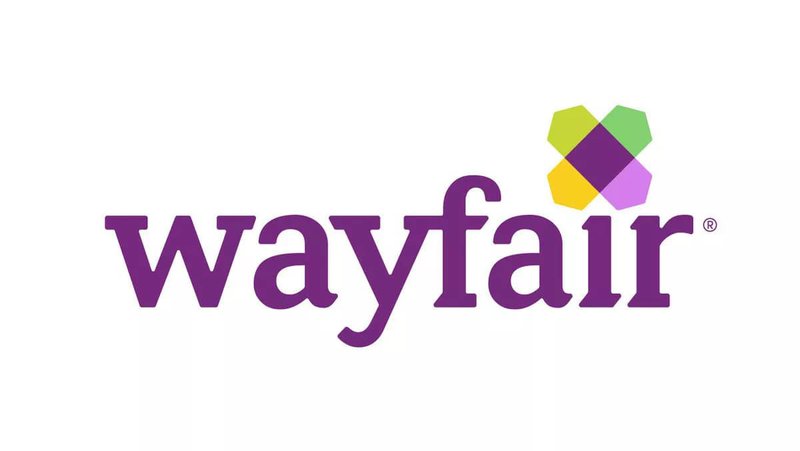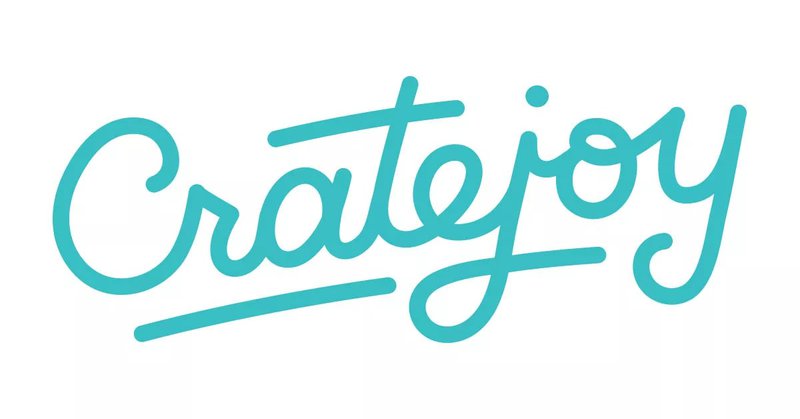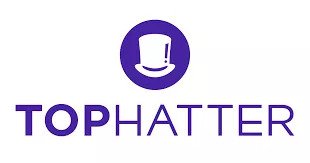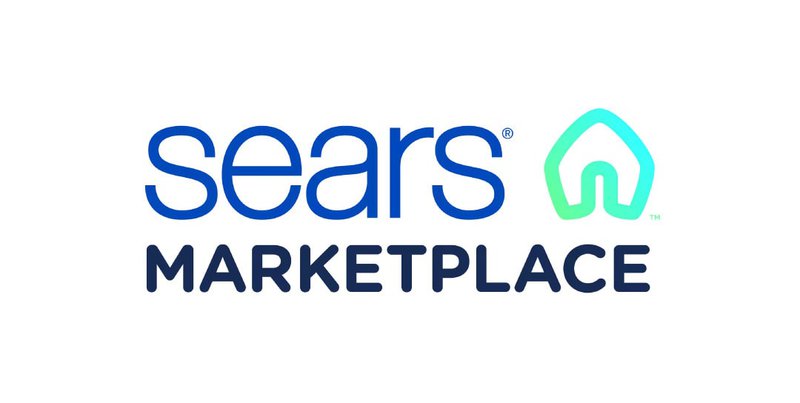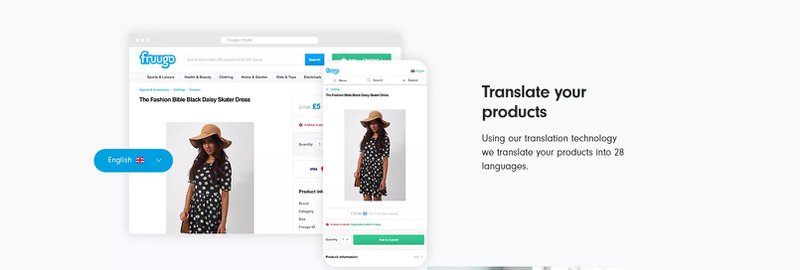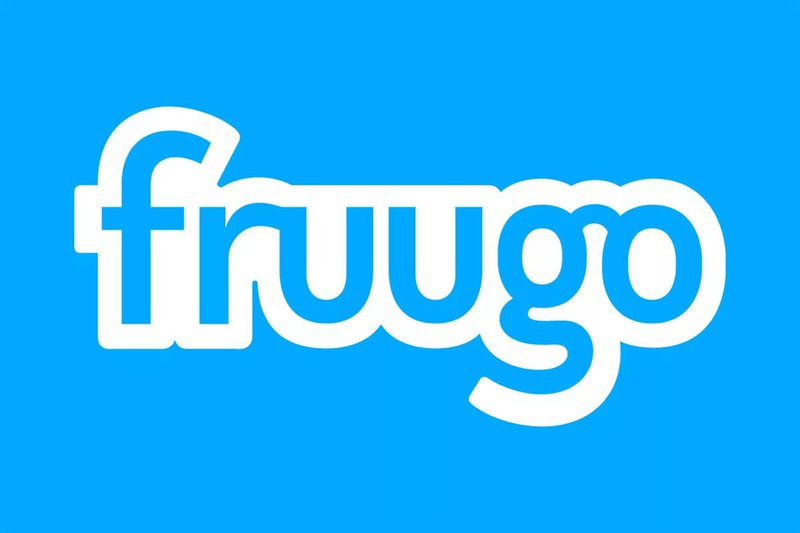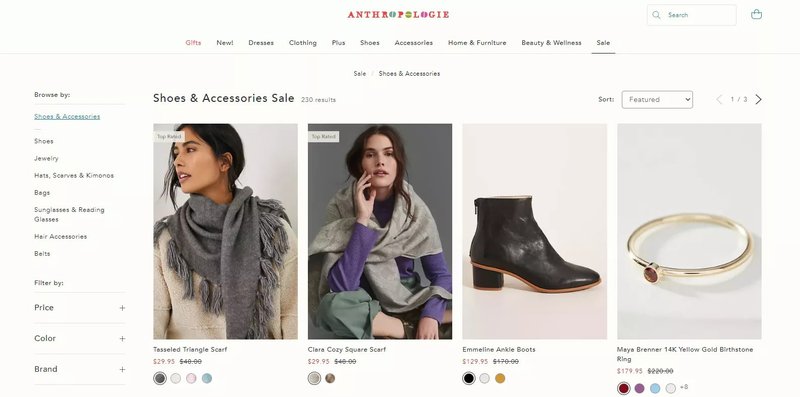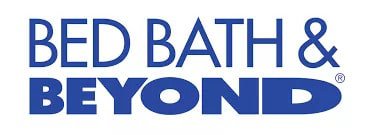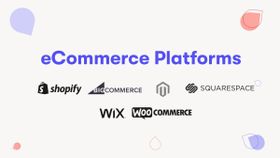Online Marketplaces: The Best eCommerce Guide on How to Sell Your Product On The Web in 2024
Here's a comprehensive guide about selling on an online marketplace like Amazon, eBay, Etsy, and Wish. Here's how to generate more sales for your eCommerce brand.
Updated November 6, 2024

Online marketplaces are some of the best digital marketing channels known to man. Since the rise of giants like Amazon, eBay, and Alibaba, brands have rushed to thrive, compete, or be beat on these online storefronts.
More and more brands are expanding to online retail websites to diversify their sales channels. And eCommerce is growing at almost double the rate of traditional retail. Retail sales are expected to grow at 6%-8% this year, while eCommerce sales are expected to grow at 14%.
If you’re an eCommerce manager or online store owner or even a junior marketer you need to get some online marketplace skills in your tool belt.
It’s essential.
So today I would like to share with you a quick breakdown of some of the top marketplaces, strategies for success, and the tools you need to blast off.
Let’s dive in.
What are online marketplaces?
An online marketplace is a type of e-commerce website where product or service information is provided by multiple third parties. Online marketplaces are the primary type of multichannel eCommerce and can be a way to streamline the production process.
Why sell your product online?
First things first, why should an eCommerce business consider expanding to other marketplaces?
The obvious reason is increasing sales and growing your user base, but there are other reasons as well. Let’s look at the top reasons for marketplace expansion.
Increasing sales
The obvious benefit of expanding to marketplaces is the potential to make more sales and increase your profit. Each marketplace has its own audience (often overlapping) and its own fee structure.
For example, Houzz charges an 18% commission while Etsy only takes 5%. Compare the selling fees and payment systems of each marketplace to find the best fit for your store. There are a lot of opportunities to find the right marketplace for your brand with the right product and audience fit.
Growing your brand on the web
You’d be surprised how many people find a product they like on Amazon or eBay and then buy it directly on the company’s website.
It happens all the time.
Plus, the more that customers see a certain brand, the more familiar it becomes to them and they are more likely to buy or recommend its products to their friends.
Brand growth isn’t really quantifiable but marketers can measure it by the overall site traffic and branded searches.
A study done by USPS and comScore found that 97% of online customers first browse products on a marketplace before making a purchase
Strategic partnerships
There are a ton of opportunities to combine online marketplaces with affiliate marketing. Some affiliates will only work with you if your products are on Amazon for example. So start selling on Amazon because it can open doors for you to build long-term partnerships with affiliates, coupon sites, large publications, etc.
Loyal customer base
One of the greatest reasons you should sell on online marketplaces is the established audiences they have. If you combine Amazon, eBay, and Walmart’s marketplace you’re looking at 500M+ active monthly visitors, that’s a huge chunk of online real estate.
And if you’re thinking of launching on the more boutique marketplaces like Etsy or Farfetch or Houzz, each one has a very loyal customer base (and an active audience) that is genuinely excited to and looks for new products on those platforms.
If you combine Amazon, eBay, and Walmart you’re looking at 500M+ active monthly visitors.
I remember when Groupon was still new, back in 2010-2012, little mom-and-pop businesses would blow up overnight. Any business that would launch a promotion on Groupon back in those days would get over 300+ new customers in a matter of weeks.
And that’s how it works when you sell on an online marketplace, albeit it’s a little less dramatic.
Long-term growth
Last but not least, once you get traction on an online marketplace (if your product is good and you’re getting positive reviews and success stories) then you can often expect long-term growth.
The channel will require normal customer service and operation efforts to ship and service your customers. And you can continue to optimize your listings, but you won’t need to re-invent your business. This is the epitome of “not putting your eggs in one basket”.
Pro tip: Want to improve your marketplace strategy? Check out our list of the top eCommerce freelance experts.
eCommerce DTC vs Selling on a Marketplace
Don’t get me wrong, it’s super important to continue your direct-to-consumer activities on your site, and selling on marketplaces will only help grow your brand and site presence if you do it the right way.
A lot of people wonder which one is better and what the advantages are so let’s break it down.
Selling direct-to-consumer
Pros:
- You have 100% control over the user experience and brand perception
- You get the customer’s info and can retarget your traffic from any channel
- You don't have to pay extra fees
Cons:
- Exposure is more limited and depends on your marketing budget
- You miss out on the opportunities available on online marketplaces
- It’s harder to expand into new regions and markets
Selling on an Internet marketplace
Pros:
- You get access to millions of consumers
- Easier to rank in search (with more real estate on the search results page)
- You can amplify your sales by using marketplace ads
- Email automation is included for abandoned shopping cart campaigns
Cons:
- You often don’t get the customer’s info (like their email address) and are not allowed to retarget them
- When you switch marketplaces, you have to start from scratch
- You have to carefully follow the unique requirements and guidelines of each marketplace. For example, on some, you are not allowed to provide your email address to the buyer, on other ones you are.
- Some marketplaces have high listing fees and/or transaction fees
So what’s the best strategy?
The best strategy is to establish your online presence by selling on your own eCommerce site and expanding to as many online marketplaces as feasible.
And we’re going to discuss exactly how to do that.
Ok, so to summarize, there are a ton of benefits to selling on online marketplaces.
Let’s first cover some of the general marketing strategies that are common across all marketplaces before we narrow down the specifics.
What are some general marketing strategies for online selling platforms?
Here are some of the best strategies to help you succeed and grow on any eCommerce marketplace.
Excel in customer care
This sounds like a no-brainer but when you sell on an online marketplace you have to go above and beyond in your customer service. Every marketplace builds different customer expectations on shipping and customer care and you have to match those to be successful.
For example, Etsy customers expect every communication to be really personal. Houzz expects brands to ship the product in under 48 hours.
I recommend responding to every message from a customer in under 24 hours, no matter the channel. You should consider being more flexible when selling on a new marketplace, offering discounts, free returns, and in general, satisfying the customer even if it goes beyond your usual policy.
Give yourself time to adjust to the customer expectations and grow your reviews, that’s the key to establishing yourself as a top seller.
>>> Customer care and personalization have been the game changer for eCommerce brands. Want to learn more? Check out our guide to the top eCommerce trends and the history of eCommerce.
Share customer stories
One of the biggest trends in online retail is user-generated content (UGC) in the form of product reviews. Brands that sell directly on their own sites (Shopify, Shopify Plus, BigCommerce, and the like) display product reviews on every product page and have full flexibility and say in where they appear.
Third-party sellers on online marketplaces don’t have the choice of where and how their product reviews will be displayed. So what they need to do is to incorporate their customer’s stories in their product images, inside their product descriptions, and as product ads.
That’s a way they could really make their customer stories shine and let their service speak for itself.
Optimize your listings
It’s always good to optimize your product content for SEO purposes and to improve your click-through rates. Having good pictures, researching keywords, and tags, and including them in detailed product descriptions can help you rise to the top of marketplace search results.
Your focus should be writing for the customer first, so make sure that you have all the product information that the customer might be looking for (dimensions, specs, instructions, etc). Also, make sure to use the various SEO tools that are available for the channel that you are working with.
Pro tip: always include a video on each of your product listings. Video has been a huge trend, particularly among Chinese shoppers, on platforms like PopShop and Whatnot. Live streaming platforms in particular have garnered 37% of online shoppers in China. And this growing trend among Chinese customers is moving west to giants like Amazon.
Automate your pricing
Adjust your pricing to every single online marketplace. The price should vary by channel because the fee structures are different and because the audiences are different. There are also marketplaces like Overstock that require you to have the lowest sale prices anywhere on the internet, and that gets hard to track. So the best way to keep track of all the pricing on every marketplace is by using a pricing automation tool. A pricing tool like Prisync or Sniffie will keep all the pricing info for you and allow you to adjust it automatically and publish it out to the marketplace. These tools also track all of your top competitor’s prices and automatically match your sale price to remain competitive.
You should also be very careful if you list products on Amazon. Studies show that 44% of Amazon shoppers always check the prices on Amazon before they make their purchase on another site.
We’ve found that it depends on the marketplace you’re working with. Some marketplace customers are more sensitive to Amazon prices, meaning they are more active on Amazon. Yet other marketplaces have more loyal customers that don’t compare prices on Amazon. So it just depends.
Advertising and promotions
A lot of marketplaces offer advertising solutions to their sellers. Amazon is the most famous example where online marketplace sellers are literally raking in tens of millions of dollars in revenue by using ads. eBay also has an ad platform that is quite developed.
Other channels are slowly developing their own advertising features and offerings - like Etsy and Houzz. These are less robust and don’t offer the customization that you would expect on Amazon or Google Ads but they are still really powerful in getting more impressions, clicks, and sales.
A study found that sellers who advertised their products on Amazon grew 63% faster than those who didn’t (ChannelAdvisor).
Promotions are also quite powerful. Later in this guide, we cover some specific promotion strategies for various marketplaces. A common practice is to test out a weekend vs weekday promotion for 10-15% off. You could also run a month-long promotion and see how it does.
With all of these benefits and strategies, businesses are still very conservative when it comes to this kind of expansion and the reason is they think that it takes a lot of time and money to do this.
What helps to simplify this kind of expansion is to create a marketing plan template and plan everything out.
Offer free shipping
Research shows that 96% of customers expect free shipping and 26% will abandon their shopping carts if the shipping is too slow. Amazon absolutely set the bar here which led to free shipping becoming available on most large eCommerce sites.
Most sellers offer free shipping and increase their pricing to adjust for that added fee. In fact, some marketplaces like Etsy and Wish actually reward sellers for offering free shipping through lower fees and more impressions.
Beware of competition
Word of caution - beware of high competition. A lot of brands copy products they see on Amazon that do well in hopes of getting their share of the American traffic. They will often post a similar product with a much more affordable price to effectively "steal" your product listing. The same could happen on other online selling sites as well but is most common on Amazon.
Here are some steps to take to protect yourself from the competition:
- Make sure that you wow your potential shoppers by optimizing your listings
- Go above and beyond to serve each buyer on every online platform
- Keep your patents up to date
- Continuously monitor your listings and make sure to report any fraudulent copycats
What are the top eCommerce marketplace tools?
In the last couple of years, there have been a lot of marketing tools and platforms that came out and significantly reduced the cost and time needed to expand to new marketplaces. Here are some of the best examples of online eCommerce software that has helped marketplace sellers sell better and more efficiently.
Shipstation
Shipstation is the top inventory management tool that lets you keep track of all your orders from all the channels that you are selling on. It integrates with all of the top marketplaces and easily lets you monitor inventory levels, change SKUs, and create automation rules that let you ship items with just one click.
Shipstation has 2 really interesting use cases where the tool is particularly helpful.
Use case #1 - International shipping
Let’s say that you’re eCommerce store sells in the US, Canada, and the UK. And you want to use Amazon’s fulfillment services (FBA) to ship products to all these regions on other channels - Wayfair, Target, and eBay.
You can use ShipStation to set up all the stores, set up all the different FBA locations, and create automation rules that will automatically ship everything for you.
Use case #2 - Multiple marketplaces & channels
Shipstation is perfect for sellers that have multiple marketplaces and “stores”. It’s really easy to plug in all the stores and channels to your ShipStation and have them all integrate and work together (without having to look through complex API documentation). You integrate and track all of your inventory with just a few clicks.
Skuvault
Skuvault is an inventory management tool that does everything from multi-channel synchronization, to organizing purchase orders, performing quality control, and monitoring inventory levels for each item. It’s a great system to use to make sure that everything is organized.
DesktopShipper
This is a great tool to find the best shipping cost for your items. If you are not using a third-party fulfillment option like FBA then you want to make sure that you are getting the best price. Use Desktop Shipper to find the best shipping option for you.
SellerActive
SellerActive is a multi-channel repricing tool that lets you monitor and change prices on products by channel. If you are selling on a few online marketplaces then it’s hard to keep track of
Deliverr
Deliverr is an innovative shipping company that can fulfill your orders for you. They distribute your items throughout their network of warehouses around the US to ensure 2-day delivery times for each order.
So you can get the same service as Amazon without having to use FBA. The advantage is that your item arrives in your own packaging, and without Amazon’s tape all over it, which is a great plus for growing your brand.
Sniffie
Sniffie is a pricing automation tool that helps you stay competitive on every channel and marketplace. It tracks all of your pricing for you and adjusts it to keep you cheaper than your competitors and still above your minimum threshold. You set up your threshold to whatever level you’re comfortable with and let the program run.
This tool literally saves you hours of time every month.
Channel Advisor
ChannelAdvisor is a super-comprehensive platform that offers not only fulfillment and inventory services but negotiates on your behalf and helps you launch on new marketplaces. They integrate seamlessly with all of the major eCommerce platforms (BigCommerce, Shopify, Magento) and have a long list of 100+ online marketplaces that they work with.
Committed Agency
Committed Agency is another great provider of online marketplace services. Their team is actually composed of a few ex-eBay and ex-Amazon employees and managers, so if you need anything optimized on those channels, they are the ones to ask. They help eCommerce brands grow on marketplaces with marketing strategies as well as operations & returns management.
Acenda
Acenda is another great eCommerce platform for multi-channel brands. It focuses on some of the largest marketplaces like Target, Amazon, eBay, Walmart, and Overstock as well as some more exclusive ones like Barnes & Noble and Bed Bath & Beyond.
It has a lot of integrations with some of the best marketing and content tools out there. It also offers inventory & order management for both your store and any online marketplaces that you would want to expand to.
Spreetail
Spreetail is a super innovative eCommerce company. They are like if ChannelAdvisor had a baby with Deliverr. They do both the marketing side, the inventory management, and the actual logistics & shipping.
One of their specialties is getting brands on some of the biggest and most exclusive marketplaces like - HomeDepot, Lowe’s, Macy’s, Target, and Wayfair. One of the brands we’ve worked with tried to get on Target for several months with no success until they reached out to Spreetail, which immediately connected them to the right people and got the process going.
Another incredible feature of this platform is that they offer next-day delivery coverage for over 80% of the US population, which means you can finally grow your own online business and rely less on FBA.
You’re probably asking yourself, well how do I find these marketplaces? And what if my business is not big enough, how will I get accepted?
Let’s break it all down for you.
How to find the best-selling platforms for my business
Here’s our formula for finding the top marketplaces for your business.
Pick the geography
First things first, pick those marketplaces that have a presence in the geographical areas that you service. If you only sell in the US then look for marketplaces that are popular in the US. If you want to go global then look for global online marketplaces that operate in the specific regions you’re interested in.
For example, if you want to expand into Latin America then you would want to sell on Mercado Libre. To target British marketplace shoppers you would want to expand into Amazon UK. For Chinese shoppers, you would want to sell on Alibaba, JD.com, or Pinduoduo.
If you are thinking of expanding to a specific country or region, take advantage of marketplaces that have a presence in that country’s market. Launching on a marketplace in a new country or region could help get you that needed boost to secure your market share in that market.
For example, Amazon has operations in 178+ countries, and you should do your research if you are launching into any of those.
The popularity of your product category
Now that you’ve picked out a few marketplaces in your desired region, it’s time to look at your product category.
- Are people selling similar products to yours on those marketplaces?
- Is this category popular?
- How many items for sale do you see?
- How many product searches are there for similar products?
- Is this category packed with other sellers or are there still lots of opportunities?
For example, if your company sells incense, Etsy has over 109,000 listings just for the keyword “incense”.
Amazon, on the other hand, only has around 10k, so there might be 10x the opportunity in this category on Amazon, and this could be a better marketplace for you to sell on.
Etsy, on the other hand, does not have a ton of sellers selling incense. So this could be a much better marketplace for you.
Integration
Now that you’ve narrowed down your selection by region and the popularity of your product category, it’s time to talk about the integration itself.
A good rule of thumb is to always pick those marketplaces that have a native integration with your eCommerce platform. So if you’re using Shopify, they have around 140+ marketplaces they can integrate with directly.
These include - eBay, Google, Pinterest, Facebook Marketplace, Etsy, TikTok, Messenger, Amazon, and more.
Here’s the full list.
- Once you exhaust these options, you can go to that list of more exclusive marketplaces that don’t have a direct integration. You’ll need to either upload your listings manually to these places (once you’re approved as a third-party seller on marketplaces) or use a more high-end solution like an eCommerce agency.
One example is ChannelAdvisor - they help brands get to the more exclusive marketplaces like Target+ and Wayfair, by connecting them to the right reps, and by providing the technology to upload and manage inventories automatically.
Look at the commission & fees
The last thing you need to look at when choosing the best marketplace for your business is the fees and commission structure. Most marketplaces are in the range of 10-15% commission, and very low fees either per product or per month.
There are a few places that will require you to offer a 50% discount right off the gate - like Overstock. So watch out for those.
You need to look at the fees as well.
Some marketplaces only charge you if you actually sell the item. So it may be more advantageous to sell there.
What are the top online marketplaces?
What do you think of when you think of online marketplaces?
Are you thinking of Amazon? eBay? Ali Express? Facebook Marketplace?
There are probably close to 150-200 large online marketplaces around the world. So if you are only focusing on a few of them, it might be time to expand.
Here is a list of some of the largest ones with some key marketing strategies for you to follow.
Amazon
Amazon is the biggest marketplace in the US and it has over 300 million active buyers and 100 million of them are Prime members. The average consumer spends around $1,400 per year. With the largest monthly traffic of any marketplace, it can be competitive for a lot of the categories but it’s an incredible opportunity for any business. A lot of retailers choose to ship with FBA which has a lot of attractive advantages.
Average conversion rates on Amazon are 13% for non-Prime members and 74% for Prime members so you want to make sure that your products are available on Prime.
Amazon is established in many countries and markets so this gives you the added benefit of working with a global marketplace. If you rely on FBA, then you simply ship your goods to an Amazon warehouse, and then they disperse them across their warehouses to ensure fast shipping.
Amazon is famous for 2-day shipping across North America and you can use their shipping for additional marketplaces and marketing channels, which is a great plus. Also, it has 2 main plans - the individual selling plan and the professional selling plan.
The individual selling plan is a pay-as-you-go option that provides instant access to the basic listing and order management tools and is great for a brand that’s just starting out (with up to 40 sales per month). The professional plan is a monthly subscription that includes advanced selling tools like bulk uploads, promotions, and special listing features.
Top Amazon marketing tips
-Invest in SEO and optimize all of your listings. This is really crucial for an established marketplace like Amazon. Spend time researching the best keywords, optimizing your descriptions, and formatting your product names to include the right keywords for the best click-through rate.
-Amazon Advertising is a HUGE source of revenue for retailers. Make sure that you have someone on the team who specializes in running ads on Amazon or pick an agency. There are a ton of agencies and marketers (lots of them are here at Mayple) that can help your sales skyrocket.
-Excellent customer service is key to selling on Amazon. Maintain a 24-hour response rate to every single question or complaint. Make sure that you answer everything on time. load up some templates that will be automatically sent for you when the order moves across the various stages. Also, make sure to respond to every single negative review to show that you care.
-Amazon helps you expand to other geographies. You can expand your Amazon store to over 19 different markets including Amazon Mexico, Amazon UK, and Amazon China.
- Amazon recently launched new built-in features to help sellers keep in touch with their customers, like a free email marketing tool, to help improve customer retention, and loyalty, and keep customers happy.
Etsy
Etsy started as a marketplace for handmade items and artisan goods and has expanded in the last few years to manufactured goods that are still designed by people or brand owners. There are many middle to large-sized brands that are popping up on Etsy every single day.
Etsy had over 2.5 million sellers in 2019 and over 39.4 million active buyers worldwide. They only charge a 5% commission and their listing fees are $0.1 which is significantly lower than other marketplaces. Etsy’s beautiful user interface, passionate audience, and no additional selling fees make it a very attractive marketplace for small brands.
Top Etsy marketing tips
Use product tags - I cannot say this enough. Product tags are probably one of the most powerful features of your listing (after the product title and description of course) and you should use the maximum 13 tags on every product.
There’s a great free tool called eRank that you can install on your store and it shows you which products aren’t fully optimized, so you don't have to go digging through your entire inventory.
Optimize your product listings - There are a whole lot of other options that sellers usually skip, but are essential. Things like the holiday or occasion, color, dimensions of the product, materials used, personalization, are all features that might land you a top spot on a user’s search. Don’t skip these, add these keywords to each product listing and test it out.
Post videos - Videos were just released on the platform and it’s a great way to differentiate yourself. You can post tutorials and guides on how to install/use your product, you can post promotional videos, and more. Etsy will start displaying more and more videos as they develop this feature so it’s a great time to jump in before everyone is using it.
Branding - Branding is super important and it’s not for the reasons you think. Branding is a way to differentiate your images from your competitor’s images. One particularly successful brand that did this is Lily and River. It’s a small company based in Phoenix and run by David Stuebe. They post these pretty best-seller badges on their images which absolutely blow up their click-through rate and sales.
eBay
eBay has 182 million users worldwide and provides a really amazing opportunity for brands to sell their goods. This popular online marketplace started as a place for buying and selling used goods and quickly grew to one of the world’s largest marketplaces.
There are certain categories that are more popular on eBay than on Amazon like sporting goods, consumer electronics, and health & beauty.
eBay also has lower seller fees compared to Amazon, they are $0.3 per listing and a 10% commission rate on each sale (in most categories). Amazon in comparison has a 15% commission rate on everything. It’s also easier to start selling on eBay because they give sellers 50 zero insertion fee listings per month.
Top eBay marketing strategies:
Promotions - promotions are absolutely key on eBay. You do need to get on the store plan with them (which is a monthly payment) but it’s well worth it. eBay tends to prioritize promotions that are about to be over so a great way to optimize promotions is to make them run for 2 days, so 15 promotions per month.
Ads - another great way to double your impressions is to advertise every single listing you have. When you do this, eBay creates duplicates of your listing when it displays the advertised one on specific search results. The amount you advertise it for doesn’t really matter in the beginning and can be tested/optimized later on.
Wish
Wish is a cross-border eCommerce marketplace for unbranded goods that are at rock-bottom prices. It was built by two former Google and Yahoo developers and it quickly became the:
- #1 online shopping app in 42 countries
- #1 downloaded app in the US in 2017
- valued at $11.2B in 2019 (CrunchBase)
What is the secret to its success?
It went after the “invisible half”, as they call it, which is those shoppers that are looking for the best deal, and don’t care which brand they are buying from. You can think of Wish as the American version of Alibaba (without the wholesale potential).
“We never hypothesized going after value conscious consumers with unbranded goods, but the early data was indisputable. There was a large underserved market of consumers that prioritized price over pretty packaging, fast shipping, and brands. Despite our metrics, we were told repeatedly and at every stage by Menlo Park investors that they didn’t know anyone that would shop on Wish.” - Peter Szulczewski, CEO of Wish
Wish became a digital commerce giant in the US because of its pricing strategy and how they prioritized pricing over the user experience. They made the experience of online shopping fun with their interactive auctions and their endless product feed. But this marketplace isn’t going to work for everyone.
A brand needs to be able to price their products very low and have very flexible worldwide.
Top Wish marketing strategies
Wish Express - try to get as many products on Wish Express, which is Wish’s program for 2-day shipping. It will boost your rankings in the algorithm and your online sales.
Global shipping - offer global shipping to your customers and choose products that are cheaper to ship, more compact, etc. This will make or break your selling experience on Wish.
Wish ads - Wish has a great and easy-to-use ad platform where you can advertise your products based on bids & keywords as well as run promotions. Spend considerable time on this, it will pay dividends in the long run.
Newegg
Newegg is another pretty large online marketplace that you can take advantage of. It’s relatively inexpensive and there are a lot of integrations that let you connect directly to Newegg and import all of your inventory. It’s most well-known for its electronics category but has other categories that are popular as well.
This marketplace became popular back in 2005 when it was named the Internet’s Top 10 retailers by the Internet Retailer Magazine/ In 2010, it made $2.5B in revenue, and in 2017 it became the main supplier behind Indiegogo’s crowdfunding campaigns.
Rakuten
Rakuten marketplace is another great place where you should sell your products. Rakuten actually started in Japan and is often referred to as the “Amazon of Japan”. The company expanded into the US market with its purchase of Buy.com in 2010.
Rakuten has about 90 million active users and has more than 40,000 sellers. The top categories on the platform are electronics, home & outdoor, clothing & apparel, and beauty.
This is another marketplace that integrates really easily with Shopify, as well as other eCommerce platforms, so definitely check it out.
Word of caution - it may take up to 45 days to get your marketplace listings up on Rakuten, so be patient. Also, you should reach out to their sales team and get yourself on the promotions that they run. Those are super powerful.
Walmart
Walmart is an iconic brand that has slowly expanded into the eCommerce space. It is one of those giants that’s known for its focus on innovation and adaptability. So back in 2017, Walmart started investing heavily in eCommerce and direct-to-consumer (DTC) brands.
It recently launched its own online marketplace called Walmart Marketplace which has contributed to the retailer’s incredible sales growth of 79% in 2021. Walmart’s active buyers spend an average of $1,000 on purchases per year. Brands can use the marketplace to sell to over 24 countries in South America and Africa.
It acquired several eCommerce companies in quick succession among them - Bonobos and ModCloth - and even overtook Apple as the third largest retailer by the end of 2018.
One of the great advantages of selling on Walmart Marketplace is that you can deliver your product to one of their stores, for an easy pickup. You should use a tool like Deliverr to ensure a 2-day delivery of all your products and an inventory tool like ShipStation to automate your fulfillment.
Here’s a great step-by-step video that goes over the process of setting up a store on Walmart Marketplace.
Target
Target made a splash in the eCommerce world when it launched its 3rd party marketplace called Target+ in 2019. It’s an exclusive invite-only marketplace that allows third-party merchants to sell their products on Target.com.
In only one year, Target has added 109 merchants and over 1.6M+ products. It’s very exclusive but it’s slowly opening its doors to new merchants. So if you run a large operation you should keep Target+ on your horizon. So far, they’ve had very strict requirements for sellers and have been invitation-only but they are slowly opening up the marketplace to more sellers.
Zola
Zola is a super unique marketplace that’s for all things wedding. It offers a variety of wedding-related products and lets its customers save products into a wedding registry.
It’s a great marketplace to sell on if you have a wedding-related product, so anything from home decor, kitchen stuff, to clothing and accessories.
Houzz
Houzz is the number one marketplace for home decor products. It started off as the first online community for contractors, builders, and interior designers back in 2009. It quickly grew to become a huge marketplace with over 10M products and 30M monthly visitors.
Houzz has a number of really powerful features:
- Site-wide promotions - you can apply to participate in site-wide promotions during the holidays throughout the year.
- Houzz ads - Houzz has an advertising platform that is still in its beginning stages where you can select a monthly budget and change your bids for each product.
- Integrations - Houzz does have a ton of integration with eCommerce tools like CedCommerce, Shipstation, Cartrover, and Geekseller.
Wayfair
Wayfair is another huge marketplace for home goods. It has over 20 million customers and made more than $9.1B in sales revenue last year.
Wayfair is known for its direct fulfillment (Wayfair Delivery Network) and if you want to sell on the marketplace be prepared to send all of your products directly to them. The advantage here is that direct fulfillment could reduce your logistics cost, but if you’re using FBA this will require a massive pivot, which could be a large barrier of entry for a third-party seller.
Wayfair is known for spending massive amounts of money on advertising which offers really great reach for online sellers. They have also launched something called Way Day, to compete with Amazon’s Prime Day, and they use 3D technology just like Houzz does.
Overall, great marketplace. It’s a bit of a challenge with logistics but if direct fulfillment is feasible for you then this could be a huge win for your business.
Cratejoy
Cratejoy is by far the most unique of all marketplaces the platform only sells subscription boxes.
Now, I know what you’re thinking, what if I don't have a subscription business? What if I sell products regularly like everyone else? What if I’m not into subscription boxes at all? Selling your products as a subscription can have a lot of benefits. Depending on the product, there could be a way to transition into monthly subscription-based pricing. It’s actually a well-known eCommerce marketing strategy that companies like MeUndies have utilized to make more profit.
MeUndies is a famous underwear company that has pivoted to offer a membership fee that offers exclusive savings for customers. This created a new stream of revenue for the business, from the same companies, boosting the company’s valuation to over $1B.
So if you’re considering launching an exclusive membership or subscription-based pricing, consider selling on Cratejoy.
TopHatter
TopHatter is an app similar to Wish. Their items are really inexpensive and ship from all over the world. And it’s an auction-style marketplace where you can bid on items, similar to eBay.
It’s live in 14 countries, has had over 25M+ downloads and sellers sold 500K+ products on the platform in 2018. They also have a wide range of categories - electronics, jewelry, health & beauty, home, kids toys, and even collectibles.
If your products are $0-20 then this marketplace is perfect for you.
Sears
Sears is the 4th largest online marketplace in the US, and though the company has closed down over 100 stores, its online presence is going strong. The marketplace has been around for a while and has 20 major product categories, lots of integrations with the major eCommerce tools and platforms that you could use to import your inventory, and promotions.
Word of caution: Sears is all about SEO so you have to get your keywords right and optimize all of your listings to start getting impressions and clicks. So if you don’t have an SEO wiz on your team you should either hire an SEO expert on a freelance basis or move on to another marketplace.
FarFetch
FarFetch is the online marketplace for luxury brands, geared towards affluent consumers. They have over 100,000 products and their average price is around $200-$300, with some products selling for over $5k+.
It was launched in 2008 and since then has grown to over 1,300 brands and more than 190 countries. It has an extensive eCommerce tech stack and sophisticated retail solutions.
Fruugo
Fruugo is a great marketplace to expand into if you’re thinking of a global expansion. This online marketplace only charges you when the product is sold, it has special translation technology that can translate your products into 28 languages, and it allows you to sell to 46 countries worldwide.
Fruugo has all the integrations you need with eCommerce tools and platforms and they advertise your products for you on different channels like Google Shopping as well. It provides a great way to attract an international audience and expand globally.
Bonanza
Bonanza - such a cool name isn’t it? And no, it’s not named after the 1959 Western film that bears the same name.
It’s a marketplace that’s built for the seller, and I’ll tell you why.
When you visit their homepage, all their branding and copy is focused on the seller, which is super interesting. The tagline “welcome to the best place to sell online” is a dead giveaway.
They don’t even display any of the products’ prices on the home page! Can you imagine if Amazon did that? So how do they make money?
Most of their sales come from off-site ads, and they will proudly manage your advertising for you. They specialize in Google PPC, banner ads, and Google Shopping. So if you want to absolutely crush on those channels and don’t have the internal resources for it, try having Bonanza manage this for you.
Word of caution - This marketplace is not ideal for eCommerce businesses that are already using Google Ads extensively or already have a strong presence on Google Shopping. Bonanza’s ads will compete with what you are already doing, by bidding on the same keywords, so you don’t want to do that. On the other hand, if you are not on those channels already then getting Bonanza’s team of experts to work on it for you is a great strategy.
Curated by Anthropologie
Anthropologie is an American clothing retailer that has expanded to over 200 stores worldwide. Recently, it launched its own online marketplace for 3rd party brands to sell their wares.
They have a wide selection of clothing, accessories, home & furniture, as well as beauty & wellness products.
Bed, Bath & Beyond
This is a huge home products retailer with over 1,460 locations in the US, Canada, and Mexico. This is more of an exclusive marketplace that is more difficult to get into. To be accepted as a seller you will need to either get an in with one of their buyers or to work with an eCommerce agency like Acenda.
CostPlus World Market
CostPlus is a specialty import retail store that has launched its own marketplace and has since gone public and has been acquired by Bed, Bath & Beyond. It has a huge online presence and is especially good for brands that sell products from around the world.
It has traditionally offered indoor and outdoor furniture, jewelry, and home products, and since then has expanded into clothing as well. It’s more upscale and its products are much more unique, similar to Etsy.
Here’s the form that you need to fill out to apply to be a vendor.
Facebook Marketplace
Facebook marketplace is a really convenient place for people to discover, buy, and sell items. It has over 800 million active users and offers a wide range of products and categories including - electronics, clothing, deals, entertainment, family, hobbies, home & garden, housing, vehicles, and more.
The main advantage of selling on Facebook marketplace is that it has a massive audience and provides you with direct access to your customers.
The downside is that you’ll have a lot more customer communication for each sale and there is a lot more logistical setup required. Also, a lot of brands show a very low display price in order to rank better, so it's harder to compete on pricing.
B2B Marketplaces
If are a B2B business and sell services or products to other companies then you have a different set of marketplaces to sell on. B2B eCommerce marketplaces are different than regular B2C ones. You’re not going to be able to go on online sites like eBay and sell only to businesses. You would need to find online marketplaces for sellers.
The good news is that a lot of marketplace operators offer programs that are geared towards business-to-business sales. For example, Houzz has a partner program that lets brands sell directly to contractors and builders. Examples of B2B marketplaces include global marketplaces like Alibaba, AliExpress, Packhelp, Zageno, and Global Sources.
The Sharing Economy
Another emerging trend in online retailing is the concept of peer-to-peer selling. This is where consumers share resources together. It has been one of the most innovative business models of the century with giants like Uber and Airbnb disrupting old industries and becoming one of the most popular companies in the world.
Examples of P2P marketplaces include:
- Airbnb - where users share their living spaces with each other
- Dopios - a travel marketplace
- Uber and other ride-sharing apps
- Facebook Marketplace - where anyone can sell anything
These examples may seem to stretch the traditional online marketplaces definition but they still fit in this category. The common feature for all of them is how much they disrupt online markets by meeting consumer needs more efficiently than existing alternatives.
Recap
Online marketplaces are a great way to grow any eCommerce business, you just have to find the right ones. Look for marketplaces that have the ideal built-in audience that you would like to market to, and make sure that it’s a fit in terms of margins, marketplace fees, and shipping policies.
Here’s what we covered in this guide:
-All the benefits of selling on an online marketplace
-The best tools to use to sell on marketplaces
-How to pick the best online marketplaces for your business
-A list of the top online marketplaces globally Once you launch on an online marketplace and get some traction, replicate your efforts on another channel and continue growing. Use inventory and pricing automation tools and utilize the marketing strategies we mentioned and you will be successful.
Be sure to check out our other helpful articles on our eCommerce blog like our eCommerce marketing resource guides for more examples of online marketplaces, marketing tips, and ways you could grow your business online.
Good luck!

